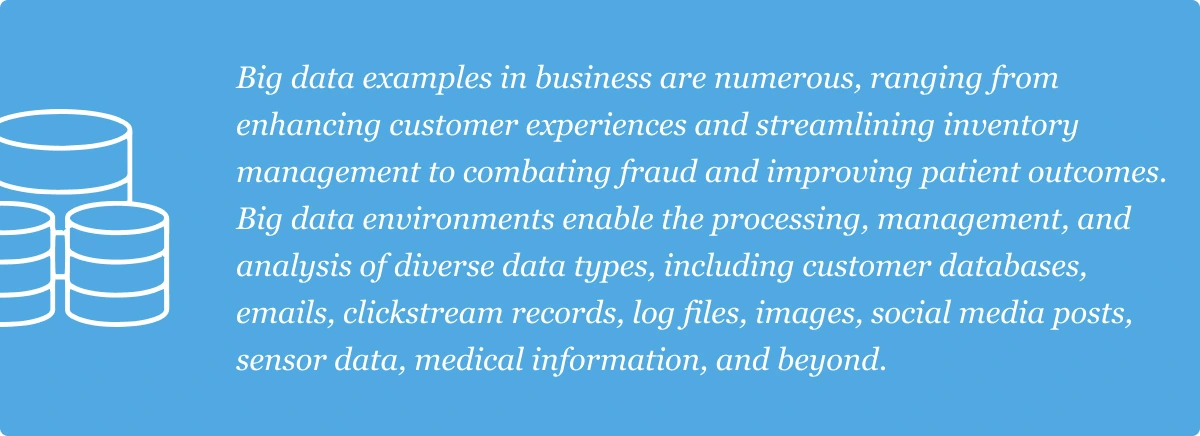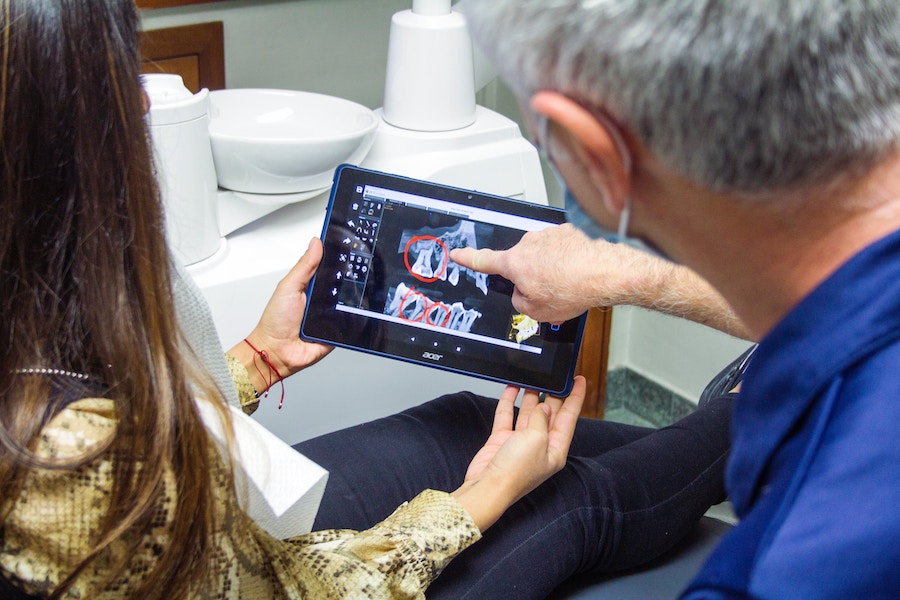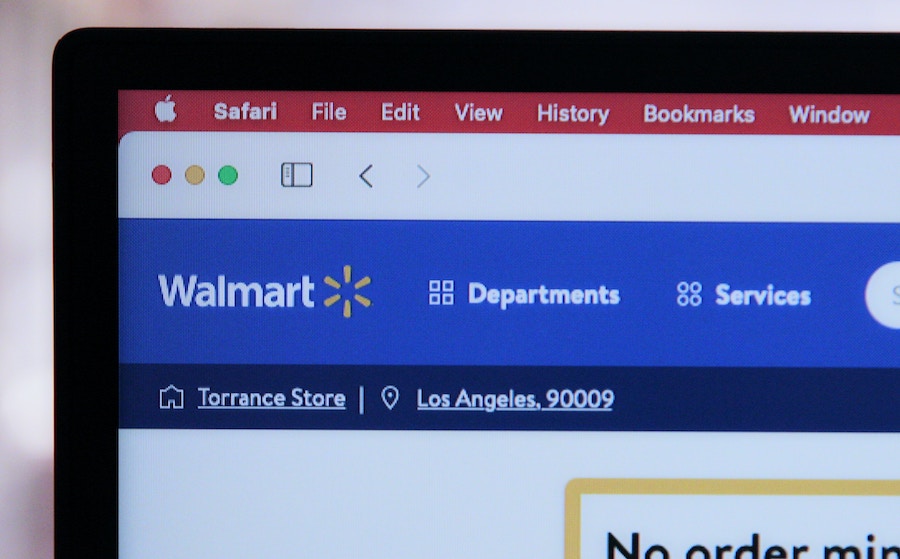The world is generating an unprecedented amount of data every second. From online transactions and social media interactions to sensor readings and scientific research, the sheer volume, velocity, and variety of data have given rise to the concept of “Big data.” This vast ocean of information holds immense potential, capable of revolutionizing industries, driving innovation, and transforming decision-making processes.
Big data refers to massive datasets that cannot be easily managed or analyzed using traditional data processing methods. It encompasses structured and unstructured data, including text, images, videos, and more. By harnessing the power of Big data and business analytics, organizations can uncover valuable insights, detect patterns, and make informed decisions that were previously unimaginable.
In this article, we delve into 16+ fascinating Big data examples that illustrate how this cutting-edge technology is reshaping various fields. From healthcare and banking to social media and entertainment, the applications of Big data are vast and diverse. By exploring these real-world Big data examples, we aim to showcase the extraordinary potential of Big data and shed light on the transformative Big data impact on society.
Big data examples in business: transforming insights and driving success
In today’s data-driven world, Big data analytics has emerged as a transformative force across industries. By leveraging the immense potential of Big data, businesses can unlock valuable insights, identify patterns, and make well-informed decisions that were once inconceivable.

For instance, Big data helps the FinTech industry remarkably. By harnessing the power of vast and diverse datasets, FinTech companies can gain valuable insights, drive innovation, and make informed decisions. Big data enables these organizations to analyze customer behavior, detect patterns, identify risks, and develop personalized financial solutions.
With the ability to process and analyze massive amounts of financial data in real-time, Big data empowers FinTech to enhance fraud detection, improve customer experiences, optimize investment strategies, and drive overall operational efficiency.
However, amidst the numerous ground-breaking Big data use cases examples and the remarkable benefits that Big data offers, infographic Big data show there is also the potential for unethical use of Big data examples. The misuse or mishandling of Big data can lead to privacy breaches, discrimination, and manipulation of information. Organizations must exercise caution and adhere to ethical guidelines to ensure the responsible use of Big data. It is essential to prioritize privacy protection, obtain informed consent, and employ robust security measures to safeguard sensitive data.
However, let’s focus on the positive sides of Big data examples in real life. From healthcare and sales to automotive and cybersecurity, Big data analytics has become a game-changer, empowering organizations to drive efficiency, enhance customer experiences, and stay ahead of the curve in an increasingly competitive landscape. However, what are Big data examples? Let’s get a closer look at how Big data is used across diverse domains.
Big data examples in healthcare: revolutionizing diagnosis, treatment, and disease control
The potential of Big data analytics solutions to revolutionize healthcare in the near future is evident from the findings of web searches. Notably, the analysis of large datasets has yielded medium to high levels of accuracy in diagnosing and predicting clinical outcomes and complications related to various chronic diseases. This highlights the transformative power of Big data examples in healthcare, where it holds the promise of significantly improving diagnostic capabilities, treatment effectiveness, and patient outcomes.
With the ability to uncover valuable insights from vast amounts of data, Big data analytics is poised to reshape the healthcare landscape and pave the way for more precise, personalized, and proactive approaches to healthcare delivery.

Source: Unsplash
Big data example #1: Washington state health care authority
The experience of the Washington State Health Care Authority exemplifies a compelling illustration of the transformative impact of Big data in healthcare. Like numerous healthcare organizations, they confronted the challenges of overuse and overcrowding in their emergency departments, resulting in stretched resources and escalating care costs.
However, by harnessing the power of Big data, they were able to identify the underlying causes of these issues and develop an effective solution. Through their data-driven approach, they successfully achieved a remarkable 10% reduction in emergency room visits. This tangible outcome demonstrates the potential of data analytics in addressing complex healthcare challenges, optimizing resource allocation, and ultimately improving patient care while simultaneously lowering costs.
Big data example #2: EHRs
Among Big data use cases in healthcare, it’s worthy of pinpointing the digitization of medical records into electronic health records (EHRs) and their integration with Big data analytics that has revolutionized healthcare.
EHRs provide real-time benefits by enabling timely reminders and alerts for healthcare professionals, improving patient care. Moreover, the analysis of EHR data using Big data techniques has unlocked valuable insights, allowing researchers to identify patterns and correlations between disease, lifestyle, and environment. This has transformed disease detection, prevention, and treatment strategies while informing interventions and shaping government health policies.
Big data example #3: stopping the spread of contagious diseases
Another notable application of Big data in healthcare is disease tracking, as demonstrated by its recent success in combating the spread of contagious diseases. An example of this is evident in the efforts to control and manage the coronavirus outbreak. Governments worldwide have swiftly implemented track-and-trace systems to prevent further transmission. In China, for instance, authorities have employed heat detectors at train stations to identify individuals with elevated body temperatures.
By leveraging mandatory identification for public transportation, authorities can promptly notify and alert those who may have been exposed. Moreover, the use of security cameras and mobile phone data enables tracking and monitoring of individuals who have violated quarantine measures. While privacy concerns may arise, this approach showcases the tremendous potential of Big data in disease tracking and containment efforts.

Source: Unsplash
Big data examples in manufacturing: transforming operations and driving efficiency
The current context focuses on illustrating various Big data use cases within the manufacturing sector. One prominent Big data example is predictive maintenance, where manufacturers utilize data analysis from sensors and other sources to forecast potential equipment failures, enabling scheduled maintenance to prevent downtime and enhance productivity.

Lastly, prominent Big data use cases in manufacturing are in energy management, assisting manufacturers in identifying opportunities to reduce energy consumption and associated costs. These examples highlight the transformative potential of Big data analytics in manufacturing, offering valuable insights for enhancing operational performance and driving sustainable growth.
Big data example #4: GE Aviation
As per AWS Big data use cases (Amazon Web Services), GE Aviation successfully implemented cloud-native data pipelines on the AWS platform, enabling the company to build robust and scalable data infrastructure. By harnessing Big data analytics, GE Aviation leveraged data collected from sensors installed on its aircraft engines to optimize its production process.
Through data analysis, patterns were identified, empowering the company to predict engine failures and proactively schedule maintenance activities, thereby preventing potential failures from occurring. This application of Big data analytics enabled GE Aviation to enhance operational efficiency, minimize downtime, and ensure the reliable performance of its aircraft engines.
Big data example #5: data-driven manufacturing
MachineMetrics is an industrial IoT platform provider catering to discrete manufacturing. Leveraging its platform, the company assisted a manufacturer in achieving a remarkable 20% increase in production. This was made possible by offering real-time visibility into machine performance and utilization. Such platforms collect data from machines and sensors deployed across the factory floor. By leveraging advanced analytics, solutions of this kind identify patterns and anomalies in machine performance.
Big data example #6: Ford
Ford leverages Big data analytics to enhance its supply chain operations by analyzing data from multiple sources, including suppliers and logistics providers. By harnessing predictive analytics, Ford accurately forecasts demand and identifies possible disruptions within the supply chain, enabling the company to optimize inventory levels and reduce costs.
One of the notable Big data use cases in manufacturing at Ford involves the analysis of weather patterns and other influential factors that could impact the supply chain. By carefully examining this data, Ford proactively identifies potential disruptions and takes necessary corrective measures to mitigate their impact before they materialize. This data-driven approach empowers Ford to maintain a resilient and efficient supply chain, minimizing disruptions, improving operational performance, and ultimately delivering enhanced value to customers.
Big data use cases in banking & financial services: driving innovation
Big data has revolutionized the banking and financial industry, offering significant benefits. Based on Big data examples in banking, It enables proactive fraud detection by analyzing transaction data, enhances customer segmentation for personalized services, aids in effective risk management through data analysis, and ensures regulatory compliance.
Big data use cases in banking have proven that, with its transformative impact, Big data is an essential tool driving efficiency and innovation in banking. Let’s dive into Big data use cases in financial services and banking.
Big data example #7: JPMorgan Chase
Among Big data use cases in investment and banking, JPMorgan Chase stands out thanks to the efficient outcome of Big data implementation. JPMorgan Chase utilizes Big data analytics to detect and combat potential fraud and money laundering activities effectively. By leveraging Big data analytics, the bank identifies patterns of fraudulent activities and promptly flags them for further investigation, resulting in a reduction in fraud incidents.
Furthermore, JPMorgan Chase has employed machine learning algorithms to enhance accuracy in identifying fraudulent patterns, reducing false positives compared to traditional methods.
Additionally, the bank applies Big data analytics to identify potential instances of money laundering, employing machine learning algorithms to improve accuracy in identifying patterns associated with such activities. Through these Big data security analytics initiatives, JPMorgan Chase strengthens its ability to combat financial crimes while minimizing false alarms, contributing to a more secure banking environment.
Big data example #8: Banorte
As Banorte expanded to become one of the largest banks in Mexico, maintaining personalized relationships with clients became increasingly challenging. To overcome this, the bank embraced data analytics to gain valuable insights into the banking behaviors of individual customers. By redesigning its systems, Banorte empowered its employees to access information that enables them to understand the unique needs of each customer, thereby creating a personalized banking experience.
Simultaneously, Banorte is dedicated to improving its cost-to-income ratio, aiming to reduce it below 45 percent. Achieving this goal entails more than just implementing technology; it requires a comprehensive reassessment of fundamental processes throughout the organization. Banorte is reimagining its operational structure, encouraging strategic collaboration among employees, and enhancing its ability to respond effectively to customer needs.
Through the strategic use of data analytics and a holistic transformation approach, Banorte strives to not only regain the personal touch in customer interactions but also drive operational efficiency, ultimately delivering enhanced value to its clients.
Big data use cases in retail to enhance customer loyalty and increase sales
Big data is transforming the retail industry by providing insights into customer behavior and preferences. Big data use cases in retail demonstrate the personalization of in-store experience, increase in conversion rates through predictive analytics and targeted promotions, customer journey analyses, and optimization of supply chain management.

Source: Unsplash
Big data example #9: Amazon
Amazon leverages extensive user data to enhance its services and tailor the customer experience. The company diligently tracks users’ purchasing history, online activity duration, and factors such as product reviews, which are valuable for sentiment analysis. Remarkably, Amazon even utilizes billing address information to estimate users’ income levels. With the amalgamation of this massive data across millions of users, Amazon creates highly specialized segmented user profiles.
Employing Big data in E-commerce, the company precisely targets its marketing strategies based on users’ browsing patterns and preferences. This personalized approach enables Amazon to suggest relevant products to customers and streamline the shopping experience by grouping related items together. By capitalizing on the power of data analytics, Amazon continuously enhances its ability to meet customer needs and foster customer satisfaction.
Big data example #10: Starbucks
Starbucks has successfully implemented personalized recommendations for its customers through its mobile app. This BI solution ensures that customers receive suggestions for items that align with their preferences, increasing their likelihood of enjoyment.
To achieve this, Starbucks makes use of the trends in Big data analytics and artificial intelligence, leveraging an extensive collection of customer data. The company significantly expanded its data-gathering capabilities when it launched its rewards program and mobile app, allowing them to gain valuable insights into their customers. Over time, Starbucks has evolved its mobile platform beyond just payments and rewards, incorporating features such as ordering and personalization.
By utilizing the vast amount of data collected from their app, Starbucks tailors the customer’s experience to their specific coffee-buying habits, including their favorite drinks and preferred ordering times. Presently, the Starbucks mobile app boasts over 17 million users, with their reward program engaging 13 million active users. This substantial user base generates a wealth of data regarding their coffee purchasing behaviors, including what, where, and when they make their coffee purchases. By leveraging data analytics, Starbucks continues to enhance the customer experience, creating a more personalized and satisfying coffee journey for its customers.
Big data example #11: Walmart
Walmart has made substantial investments, exceeding $11 billion, in the transformation of its supply chain over the past two years. Leveraging Big data analytics, Walmart optimizes its supply chain operations through various approaches.
Firstly, the company utilizes data analysis to analyze transportation routes within the supply chain, identifying opportunities for optimization. Additionally, Walmart employs Big data analytics to enhance pricing strategies, ensuring competitive and optimized pricing across its products.
Furthermore, by harnessing the power of Big data, Walmart can forecast demand accurately, enabling the availability of products precisely when customers need them. This proactive approach helps in meeting customer expectations and reducing instances of stockouts. Moreover, Walmart employs Big data analytics to streamline its supply chain efficiency by minimizing waste and cutting costs. By leveraging data-driven insights, Walmart continuously improves its supply chain processes to enhance operational efficiency and customer satisfaction.

Source: Unsplash
Big data use cases in media and entertainment: preference predictions
The media and entertainment industry is undergoing a transformative journey propelled by Big data. As Big data use cases in media and entertainment show, Big data analytics assumes a paramount position in this sector as they strive to comprehend the desires and preferences of their viewers, enabling them to produce tailored content that captivates and resonates with their audience.
Big data example #12: Netflix
Netflix, with its extensive subscriber base of over 150 million users, strategically collects data on each individual. The platform tracks various aspects, such as viewers’ watching habits, encompassing what they watch, when they watch, the devices they use, whether they pause a show, and even the speed at which they complete a series.
Furthermore, Netflix goes to the extent of capturing screenshots of scenes that are re-watched. This meticulous data gathering serves a crucial purpose: by feeding this wealth of information into their algorithms, Netflix constructs personalized user profiles. These profiles enable the platform to deliver highly accurate recommendations for movies and TV shows, tailoring the viewing experience to individual preferences. It is worth noting that while Netflix is renowned for investing significantly in new shows, these decisions are not made blindly. The comprehensive data collection and analysis empower Netflix to make informed choices about what content to commission next, ensuring that their investments align with viewers’ preferences and interests.
Through the integration of data-driven insights, Netflix continues to enhance its ability to curate a compelling and engaging entertainment experience for its diverse subscriber base.
Big data example #13: Hulu
Hulu employs a similar approach. Hulu harnesses the power of Big data analytics to enhance various aspects of its platform, taking in content acquisition and recommendation systems. With an advanced recommendation engine, Hulu tracks user viewing habits, enabling the platform to create a more individually catered experience. Valuable insights derived from consumer behavior form the foundation of Hulu’s recommendation algorithms, which continuously improve over time.
By leveraging its online and offline architecture, Hulu effectively utilizes data to inform its recommendation decisions and generates regular reports on the quality and effectiveness of these recommendations. Through the strategic application of Big data analytics, Hulu strives to deliver an optimized viewing experience that aligns with its users’ unique preferences.

Source: Unsplash
Big data use cases in social media: analytics and personalization
Social media developers and owners can realize impactful gains from harnessing the power of Big data. A noteworthy edge exemplified by the use of Big data in social media is the ability to detect patterns and trends within social media data, empowering developers to enhance the overall user experience.
Moreover, Big data analytics enables the identification of areas where users may encounter challenges with the application or website, thereby paving the way for necessary improvements. This data-driven approach empowers social media platforms to ongoingly refine and tailor their offerings, ultimately delivering users a more personalized and gratifying experience. So, here are some prominent Big data use cases in social media that we got to use on a daily basis.
Big data example #14: Instagram
The first social media Big data example is Instagram in the current Big data example dataset. Social media leverages the power of Big data and artificial intelligence (AI) to improve its platform in various ways, benefiting both users and advertisers. One key application is the utilization of data analytics and AI algorithms to enhance user experiences by enabling effective content discovery. By employing tags and trending information, Instagram assists users in finding relevant photos related to specific activities, topics, or events. Additionally, the platform facilitates the discovery of trending experiences, restaurants, and places worldwide.
Another noteworthy use of Big data and AI by Instagram is the detection and removal of fake or offensive content. By employing advanced algorithms, Instagram can identify and take necessary actions against such content, ensuring a safer and more enjoyable environment for its users.
Furthermore, machine learning techniques are employed to assess the audience’s response to different Instagram stories, allowing for continuous refinement and optimization of user engagement. Through the intelligent application of Big data and AI, Instagram strives to enhance user satisfaction, content relevance, and platform integrity.
Big data example #15: Linkedin
LinkedIn harnesses the potential of Big data through various initiatives. The platform meticulously tracks user activities, leveraging this data to drive informed decisions and develop data-driven features. LinkedIn continuously improves its algorithms by employing machine learning techniques, providing users with more accurate and relevant suggestions.
Furthermore, LinkedIn utilizes Big data analytics to derive performance metrics and valuable business insights. These insights contribute to profitable decision-making across marketing, sales, and other functional domains, empowering businesses to thrive on the platform.

Source: Unsplash
Big data use cases in telecom that drive security and improve the quality
Big data provides telecommunication companies with a wide range of merits. It enhances network security, improves customer service, reduces fraud losses, predicts equipment failures, enables location-based promotions, supports targeted marketing campaigns, monitors real-time network performance, and identifies new product opportunities. By leveraging Big data, telecoms can optimize operations, make informed decisions, and foster innovation.
Big data example #16: T-Mobile
T-Mobile is one of the Big data use cases in telecom. The company maximizes the potential of Big data to elevate network security and mitigate fraud losses. They can promptly detect and address potential threats and vulnerabilities by employing Big data. Regrettably, T-Mobile experienced its fifth data breach in 2018, highlighting the ongoing challenges in safeguarding customer data.
In August 2021, T-Mobile confirmed a criminal cyberattack that resulted in the compromise of customer data for millions of individuals. T-Mobile has been actively conducting forensic analysis, investigating the incident, and implementing proactive measures to safeguard affected customers and minimize any potential harm resulting from the breach.
Big data example #17: AT&T
AT&T uses Big data analytics to optimize customer experience and network performance. They use machine learning and predictive analytics to auto-heal the network quickly and effectively; optimally configure complex network environments; and ensure that they can, in near real-time, get network capacity to where their customers need it. They always start with the customer experience, which matters most.
Using Big data analytics, AT&T can achieve meaningful cost savings, improve traffic performance, optimize network infrastructure utilization, and ultimately deliver a rich customer experience.
Conclusion
The examples showcased underscore the tremendous promise of Big data development services in revolutionizing various economic sectors and reshaping decision-making processes amidst the exponential growth of data. Across domains like healthcare, finance, manufacturing, and social media, businesses are harnessing the power of Big data to unearth valuable insights, elevate customer experiences, and foster innovation.
Big data analytics enables proactive fraud detection, personalized healthcare, optimized supply chains, targeted marketing campaigns, and more. The transformative impact of Big data becomes apparent through the tangible outcomes achieved by organizations. In essence, Big data analytics possesses the capacity to reshape industries, fuel innovation, and unlock the unprecedented room for business improvement and thriving in a world driven by data.
Facilitate decision-making with Big data
Looking for a way to speed up your decision making? Contact our specialist for a consultation.




